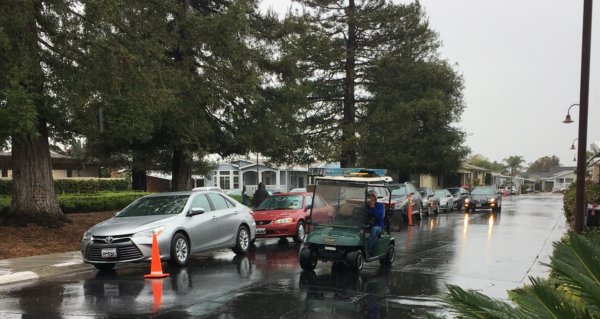Steps we are taking to avoid getting infected by COVID-19

What are you doing TODAY to help prevent getting infected by COVID-19? Check out these two things that we are doing. Maybe you can find them useful, too.
(I apologize to new readers for jumping right into action here, but there doesn’t seem to be time for a gentle introduction! I’ll be working on more “conversational” blogs in the coming days!)
Masks reduce the chance of getting infected and of infecting others.
We live in a retirement community – which puts all our neighbors, by definition, at a higher risk of carrying and getting seriously ill from the coronavirus. The good news is we have developed a Neighborhood Emergency Response Group that stays in touch (with regular walkie-talkie drills! and now, with zoom calls or telephone conference calls) and tends to be proactive instead of reactive.
Our neighborhood group is sewing and delivering masks.
For instance, this morning I picked up two sets of hand-made masks from one of my group members. The masks were stitched, disinfected and packed carefully in clean plastic baggies. With ever more urgent information coming out about wearing masks all the time in public – and maybe even in the house if you have someone who is ill – this is the second wave of protection that we’ll be offering to all our neighbors. (We have already been practicing distancing and sheltering-in-place for weeks.)
So the question – where are you getting masks for yourself and your family? To avoid depleting the commercial supply for health care workers, you can make them yourself. Here is an article with links to several different models and patterns, plus a video showing a simple mask made with just a handkerchief and rubber hair bands, no sewing at all! However you make or buy masks, it’s clear that the more layers of cloth, and the closer the fit (without gaps), the more effective the mask.
(If I were going to buy the hair bands as shown in the video, I’d look for some like these shown below. Click the link and you can see what prices are for these and similar bands at Amazon. Full disclosure — we are Associates at Amazon and can get a small commission if you buy through this link. It doesn’t affect your price, of course.)
Improve your lungs even before you get infected by COVID-19.
True story. Last November friends of EmergencyPlanGuide were alerted to my partner Joe’s life-threatening anaphylactic response to the contrast dye associated with a CT scan. This had nothing to do with COVID-19, of course. And I am happy to report that he is not only back to normal but even BETTER than he was before this all happened!
During the episode, though, doctors were concerned that his lungs had been damaged. And they kept testing and testing. One of the tests is what I want to mention today. It seems as though there could be a use for it as more and more people are threatened with respiratory distress associated with being infected or even having survived COVID-19.
Joe was using only half his lung function.
After those days in the ICU, Joe couldn’t exercise. He was lying down much of the time. He was breathing very shallowly.
To get Joe to exercise his lungs, doctors told him to use what’s called an incentive spirometer. Put simply, you breathe in through the spirometer tube and it measures how well your lungs are working. Because it measures, you get a baseline and as you practice, you can see your lung capacity improve. The spirometer allows you to keep your lungs active even without exercise.
Here’s a video that shows how the spirometer works.
And here’s a link to Amazon, where you can purchase a spirometer.
Now I’m not a doctor and I’m not giving you medical advice. We are using each of these two items and I don’t think either one has a downside. So I pass them along for you to consider as you do your best to be proactive in this difficult situation.
And tomorrow, I’ll come back with more info about who I am and how Joe is better than before it all happened . . .!
Virginia
Your Emergency Plan Guide team




